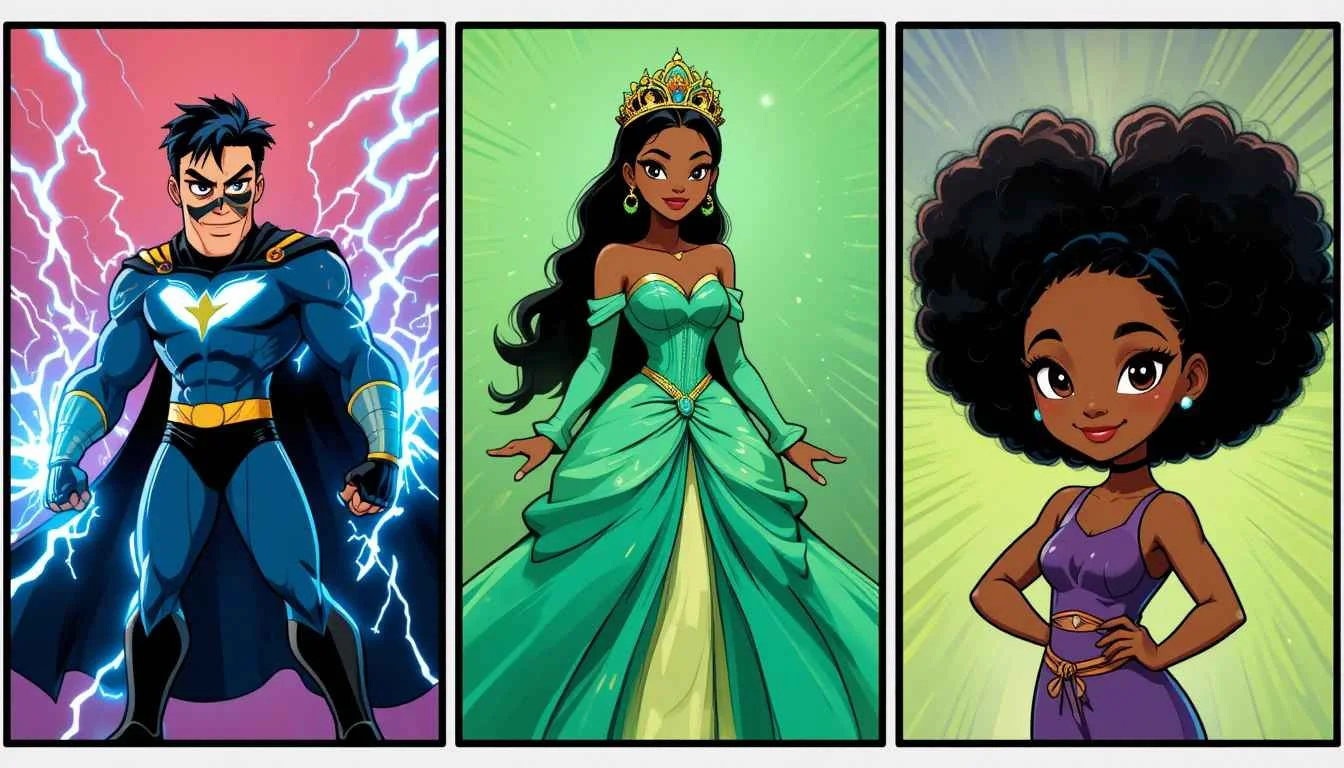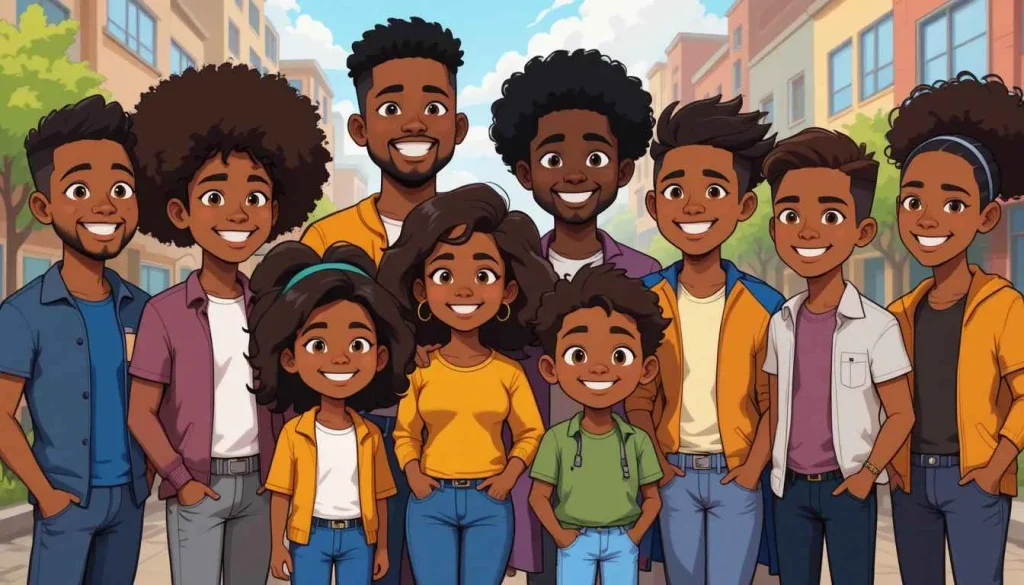
Black Cartoon Characters Realistic animation with colors exhibits the essential value of Black cartoon characters for representing human characters along with cultural diversity and authentic stories. For many decades cartoons utilized stereotypes to depict social values until new powerful African American cartoon characters emerged as unique storytelling instruments to represent their diverse audience base that numbers in millions of kids and adults worldwide.
Beyond their animated identities these screen characters represent important stories that function as genuine sources of strength. More and more people worldwide welcome African American cartoon figures that appear in television productions and animated motion pictures. Mainstream media platforms present growing diversity in representation that enhances the audience demand for characters who reflect their needs for representation.
Famous Black Cartoon Characters That Inspired Generations
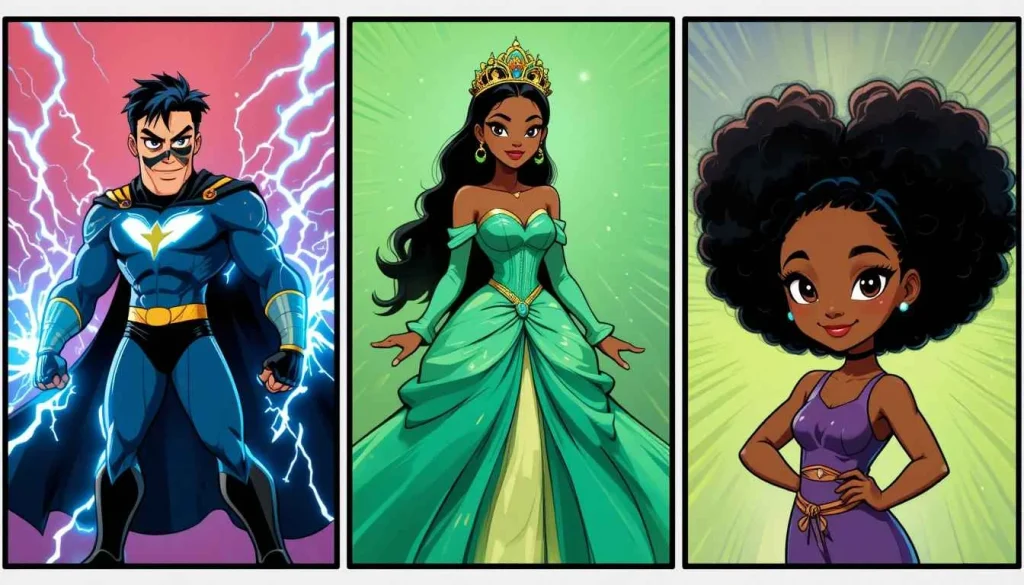
The Saturday morning cartoons gained superhero brilliance and mental capacity with the arrival of Static Shock as a legendary Black cartoon character. Princess Tiana shines as the trailblazing first Disney princess from an African heritage in The Princess and the Frog film. Her tale about perseverance which embraced hopes struck a chord with multitudes of people.
The Proud Family introduced Penny Proud who showcased a combination of sass and heart and relateable personality traits. The animated characters created new ideas about how Black young people should perceive themselves through media.
Popular Black Characters in Animation Today
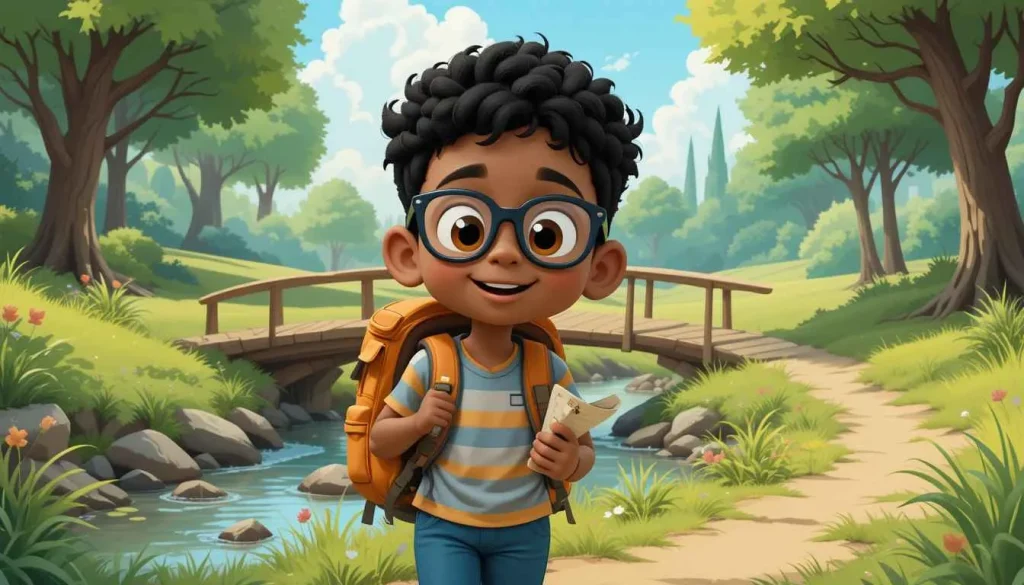
People of every age today enjoy the largest number of popular Black animated characters in history. The animation world welcomes an increasing number of Black characters with Craig Williams in Craig of the Creek and Val Little in Monsters at Work and more such characters continue to emerge.
The animated film Soul from Pixar features Joe Gardner as a jazz-loving music teacher whose life STORY showcases both living and dying while pursuing meaning. His tale transcended racial boundaries while establishing deep relationships with universal human narratives together with the celebration of Black cultures.
The Rise of African American Cartoon Characters
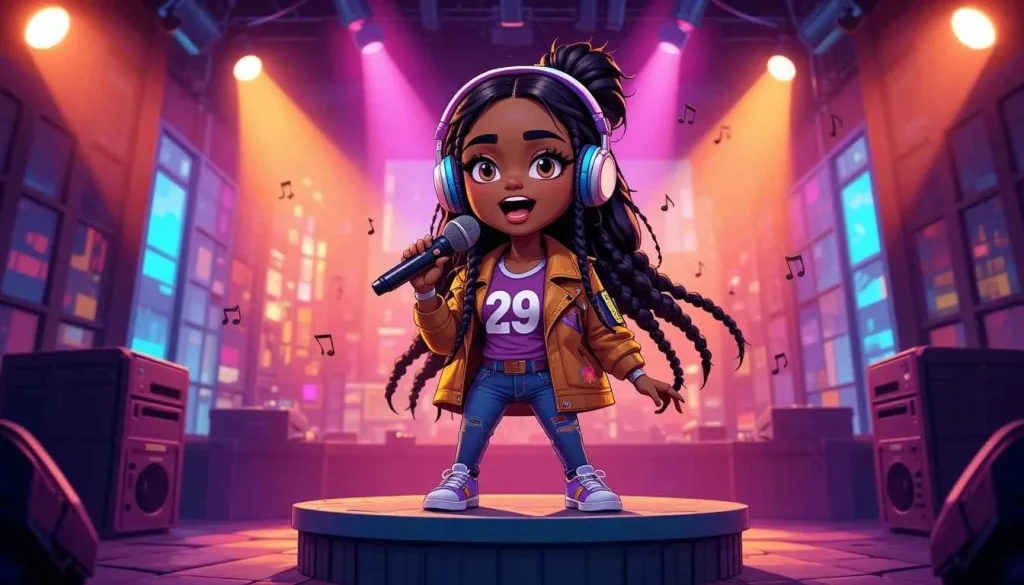
African American cartoon characters constitute an actual cultural shift beyond their current popularity trends. The creative industry has begun to understand that inclusivity strengthens storytelling and makes narratives closer to reality. Through Karma’s World created by Ludacris viewers experience the positive aspects of creativity and self-expression alongside hip-hop culture because of its Black female main character who embodies confidence.
The attractive aspect of these characters originates from their broad scope of personalities because they embody superhero characters, idealistic characters along with normal kids who possess kind hearts. Their complex nature which refrains from being flat makes them highly influential.
Why Representation in Animation Matters
Representation within media directed to youth becomes fundamentally important because of its significant impact. Black animated characters that mirror viewers’ appearance and speech patterns and daily experiences strengthen their self-assurance and develop more diverse thinking. The accessibility of African American culture through this format enables diverse audiences to gain respect for creative concepts related to black cultural heritage.
Each new addition of a character brings storytelling older to equality. Black cartoon characters now stand as leading characters who take protagonistic roles rather than serving as supporting protagonists or dehumanizing stereotypes.
Final Thoughts
Our present era marks a golden phase of animation because creators joined by their audience and production facilities work to expand diversity. Black characters have achieved significant portrayal throughout contemporary animated programs after decades of successful counterparts appeared on the scene.
We should embrace these characters yet we need to support platforms that show genuine cultural differences in varied identities. Young children require to observe characters in cartoons who share traits with themselves.

